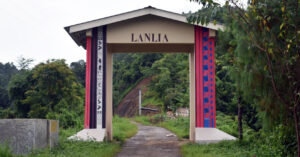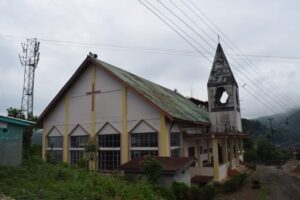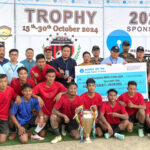The Aos and the Changs coexisting in Chakpa village under Mokokchung district, is another example of how Nagas of all tribes continue to coexist in peace, love, and harmony – two tribes sharing one village council and one church, coexisting as one cohesive whole.

The amazing narrative surrounding Chakpa village is that it was founded jointly by the Aos and the Changs, and they still celebrate each other’s differences by attending each other’s cultural festivals, such as Moatsü and Tsüngremmung for the Aos and Naknyulüm and Puanglum for the Changs. In a way, they believe this is how they preserve their identity and culture.
The villagers would also frequently quip about how fluent they are in each other’s languages and how they could talk in either Ao or Chang. Despite belonging to different tribes, the villagers have also agreed to have one system of administration and adopted the Ao traditional administrative system. Today, the Council Chairman of the village can be anyone whom the villagers find suitable, regardless of tribe.
“If the council head is from the Ao tribe, the secretary must be from the Chang tribe, and vice versa,” said Imlinukshi, 54, an Aola (chief) of the Chakpa Medemsanger Putu Menden.
Another member, A. Yachem, 62, stated that they have successfully lived together in unity for so long because of their great understanding and regard for one another.
“We make sure that there is equal representation from the Aos and the Changs in every department,” he stated.
Chakpa village includes more than 300 households.
It is said that they first founded the village at the site where the church is presently located and that the founders initially divided it into two sections: an Ao occupied area and the Chang occupied area with the present church location in the middle.
But according to Medemsanger Putu Menden, the residents have already begun to meld with each other’s sides, and therefore, there are no invisible boundaries anymore.
But how did the two communities come to coexist?
As narrated by the Medemsanger Putu Menden to Mokokchung Times, the two tribes were at conflict during the head-hunting days.
However, Mejasosang Longkumer of the Aos and Yanchutoupong of the Changs desired peace. And, fortunately for them, Putijungshi of Longkong village was someone who could comprehend and speak the Chang dialect well and knew someone named Supomer of Litem village.
And thus, with the help of those individuals, Mejasosang and Yanchutoupong met at Longkong village and agreed to form a peaceful village.
On the basis of this arrangement, Yanchutoupong Chang invited his tribesmen to join him, and some members of the Haongang, Oungh, Loumou, and Kangshu clans joined him. Meanwhile, Mejasosang was joined by the clans of Longkumer, Pongener, Jamir, Lemtur, Mozür, and Mongsener from the Aos who were all residing at Mongsenyimti then.
And together, on the same day, in 1892, at the site where the present church is located, they formed a new home which they named it as the present day ‘Chakpa’ with due permission and blessing from the Mongsenyimti village.
According to Medemsanger Putu Menden, the bloodshed and headhunting practices ceased the day they established the new village, Chakpa.
Then, Yanchutoupong, Onenjungshi, Mejasosang, and Noksang travelled to Molung village to meet with Dr. Clark, where they signed an agreement to adopt Chakpa as a Christian village.
However, it was difficult to convert the entire community to Christianity because many inhabitants were unwilling to give up their ancient beliefs and traditions.
As a result, it wasn’t until 1901 that a young man named Semsalepzung, who travelled to Impur and was baptized on August 11, 1901, strengthened the Christian religion in the village. From there onwards, the village and the residents officially accepted Christianity to be their religion, and the village is slated to commemorate 125 years of Christianity in 2026.
Dikhu river separates Chakpa village in Mokokchung district and Noksen and Litem villages in Tuensang district. Chakpa shares its border with Mongsenyimti village and Yaongyimti to the north and Longkong village to the South-West.





